January 02, 2025
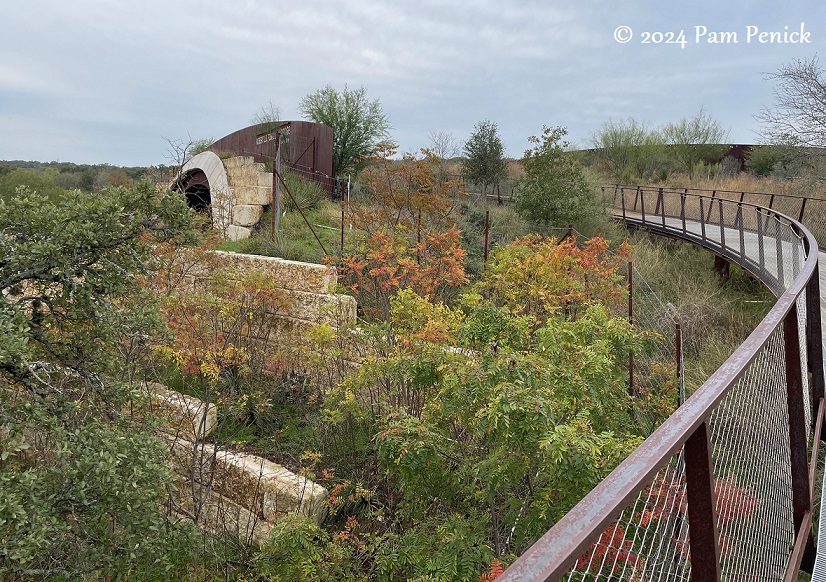
Before the Tobin Land Bridge was built in Phil Hardberger Park in San Antonio, deer, bobcats, coyotes, armadillos, and other four-legged wildlife had to dash Frogger-like across 6 lanes of traffic to access all 330 acres of habitat. Wurzbach Parkway kept people from exploring half the parkland too. But in 2020, thanks to public-private fundraising for the $23 million project, the east and west sides of the park were joined by a beautifully designed land bridge.
At the time of its construction, Tobin Land Bridge was the first crossing in the U.S. designed for both wildlife and people. It was also the largest. Everything’s bigger in Texas! I visited in early December.
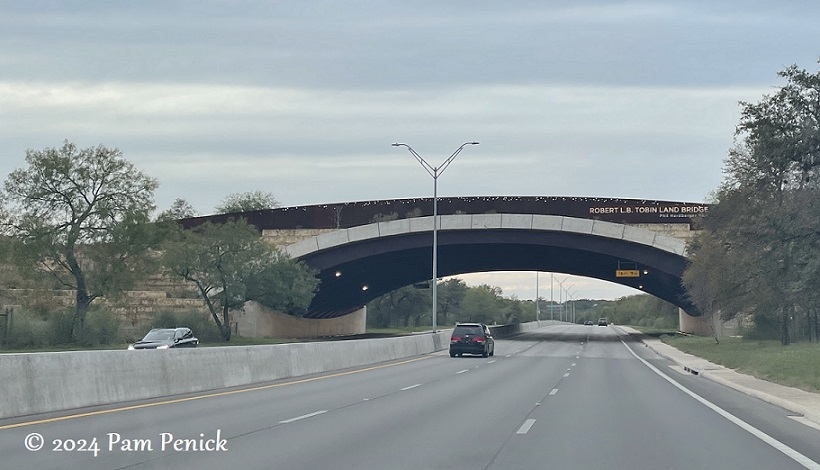
Ramped over the rush of traffic below, the 150-foot-wide and densely planted bridge gives wildlife and human visitors safe passage. From the parkway, you don’t even notice that it’s a planted-up green bridge.
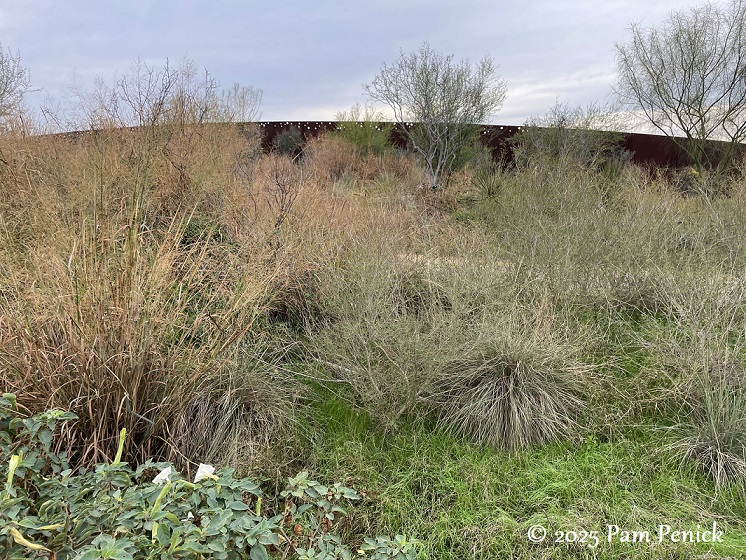
But up on the bridge, it’s a different world. Thick plantings of native grasses, perennials, shrubs, and trees extend the park right over the highway. You can imagine wild creatures finding their way across in safety. As in fact they do, documented by the park’s game cameras.
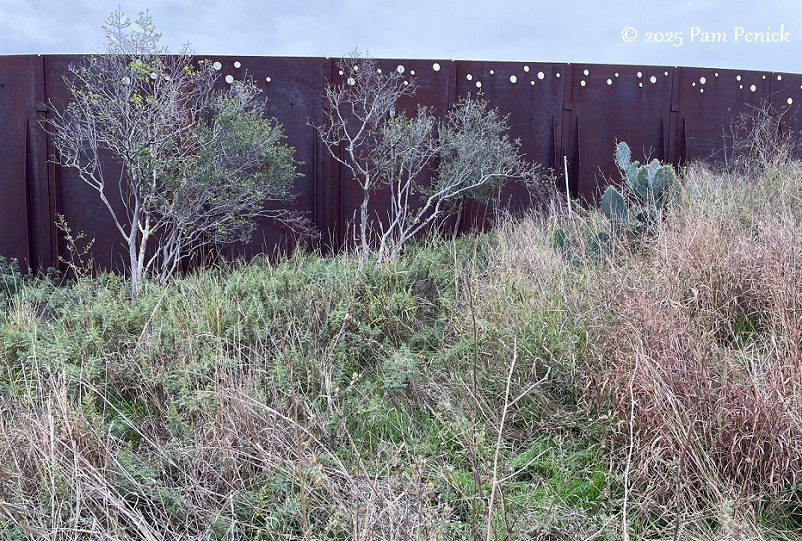
Walls of Corten steel stand 8 feet tall, blocking the sight and dampening the noise of cars and trucks roaring by below.
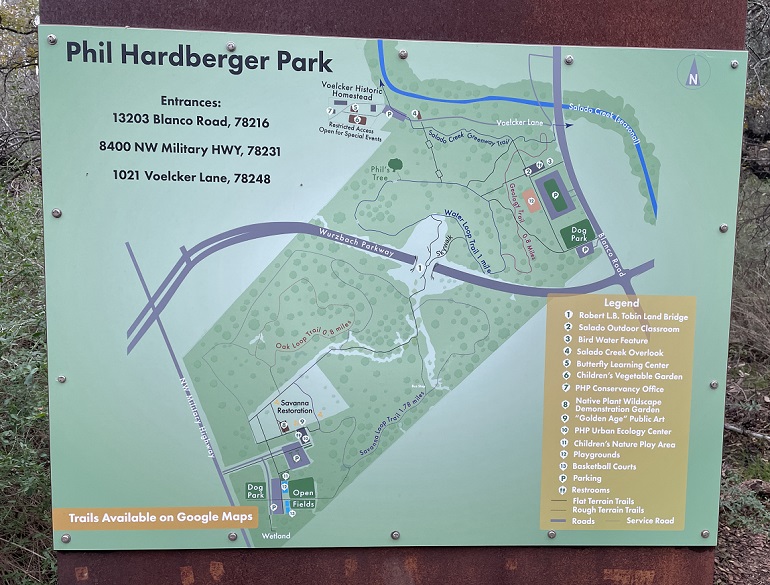
Phil Hardberger Park is located in north-central San Antonio. To reach the land bridge, you have to walk or bike a little more than half a mile from either of the park’s main parking lots.
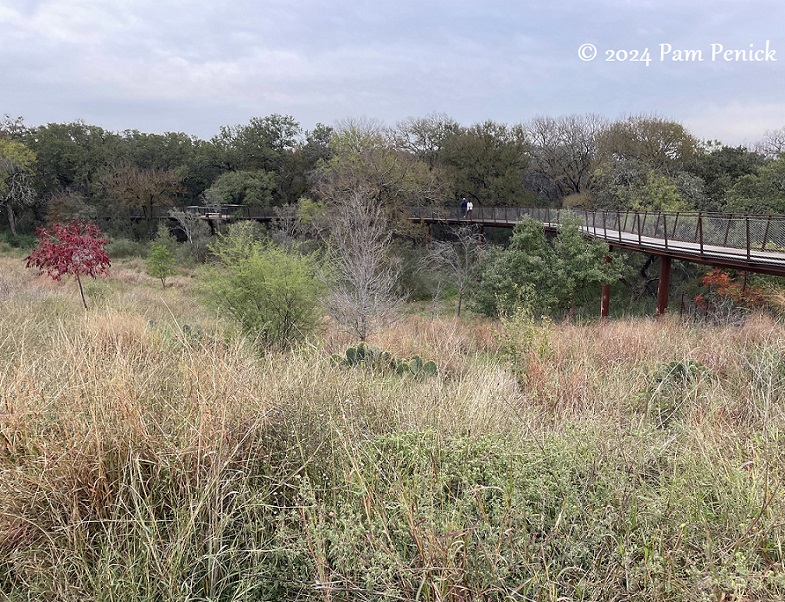
An elevated trail called the Skywalk lifts you into the trees on one side of the bridge, offering a squirrel’s-eye view of the park.
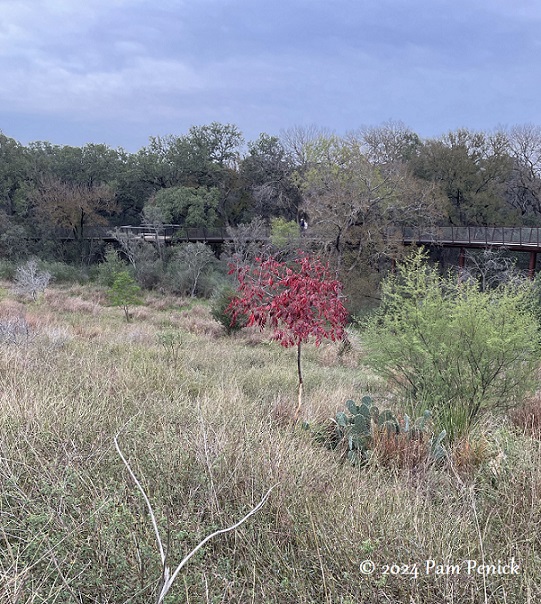
Trees were just starting to take on fall color in early December. One young tree with beautiful red leaves had unfortunately been stripped of bark on its lower trunk by deer rubbing their antlers. Will it survive? Hopefully park staff or volunteers will start caging young trees to protect them from deer until they’re well established.
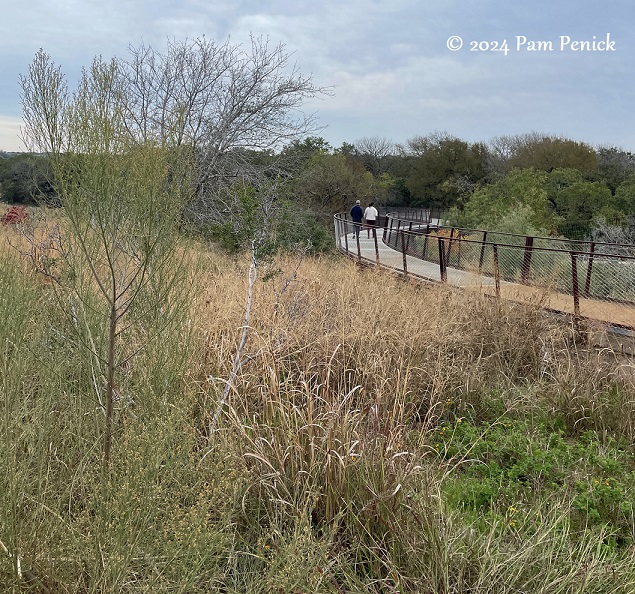
Tawny grasses were rustling, their seedheads ripening for birds to feast on all winter. This is why not to cut grasses back before mid-February in Texas. Leave seeds and habitat for wildlife.
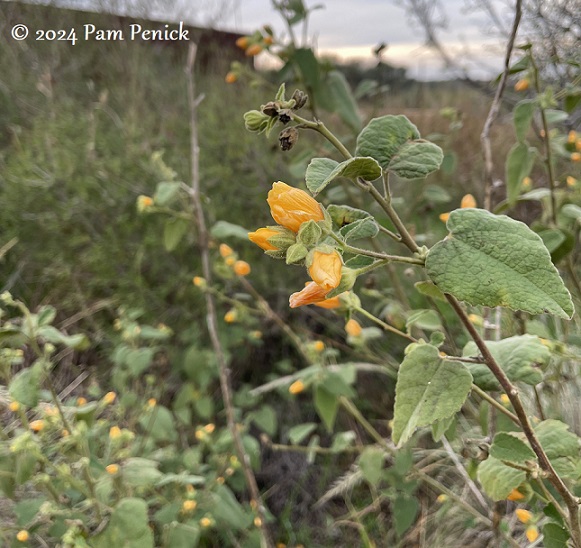
Gray globemallow, I think
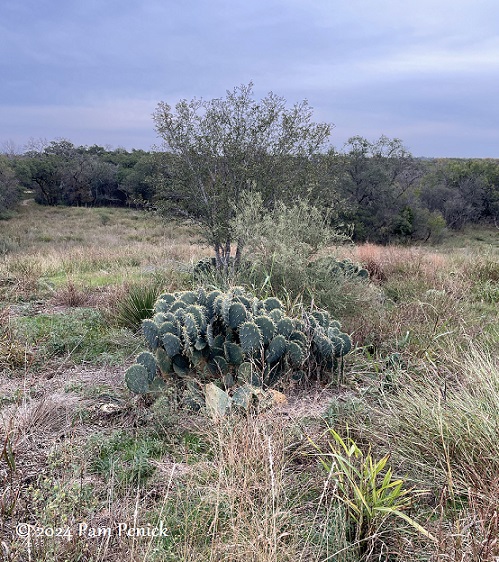
Prickly pear in a grassy savanna — a classic Texas scene
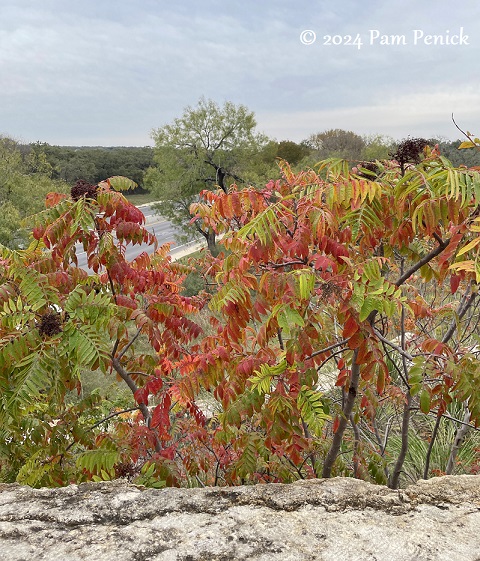
Flameleaf sumac going orange-red for fall
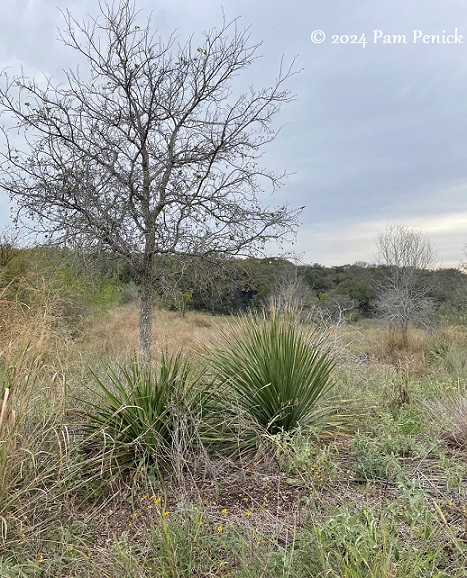
Texas sotol is one of my faves for backlit beauty and cold, heat, and drought hardiness.
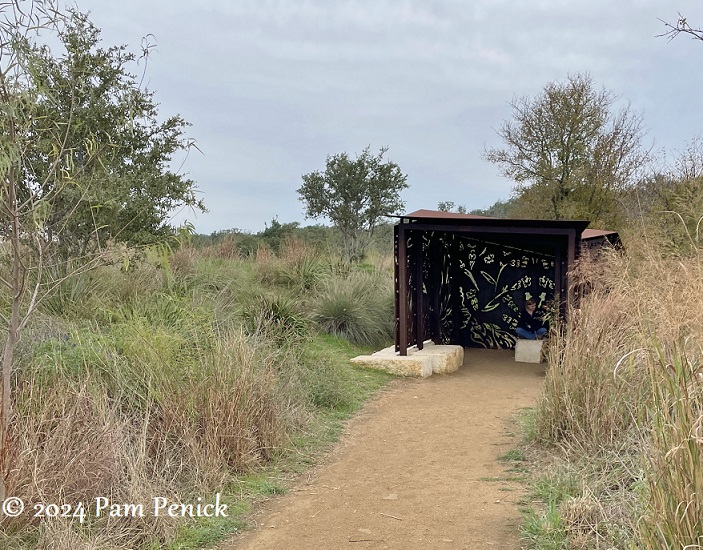
Two steel shelters along the trail double as wildlife viewing blinds and as public art. Designed by San Antonio artists Ashley Mireles and Cade Bradshaw, one blind has cut-outs of native flora.
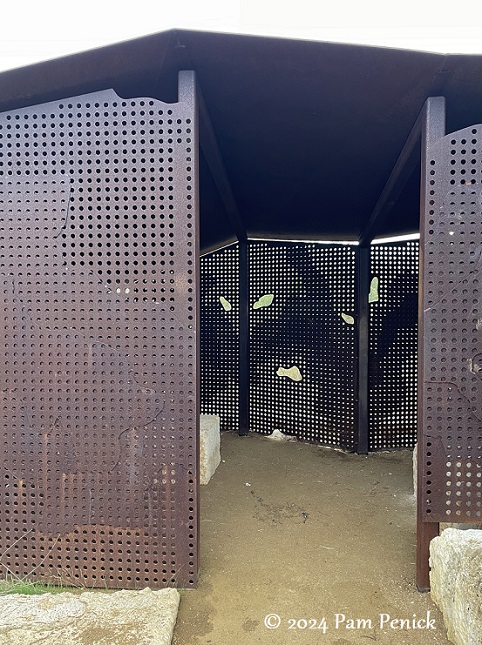
The other reveals silhouettes of native fauna in its perforated and layered structure.
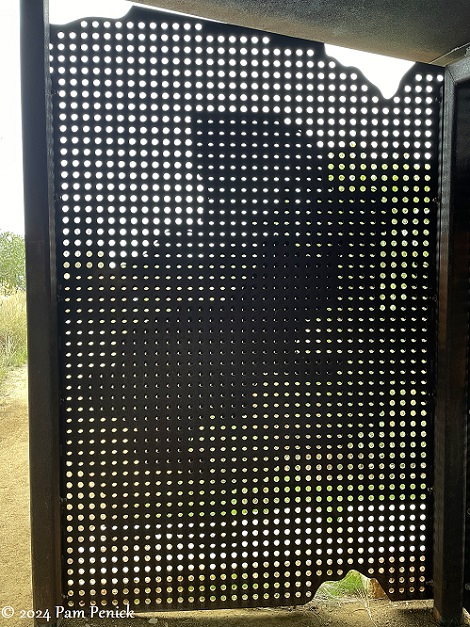
This looks like a bobcat.
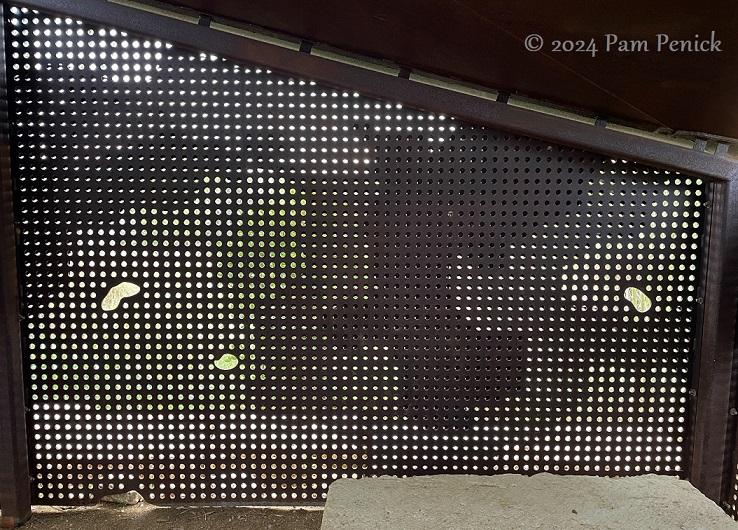
And here’s a mockingbird in flight.
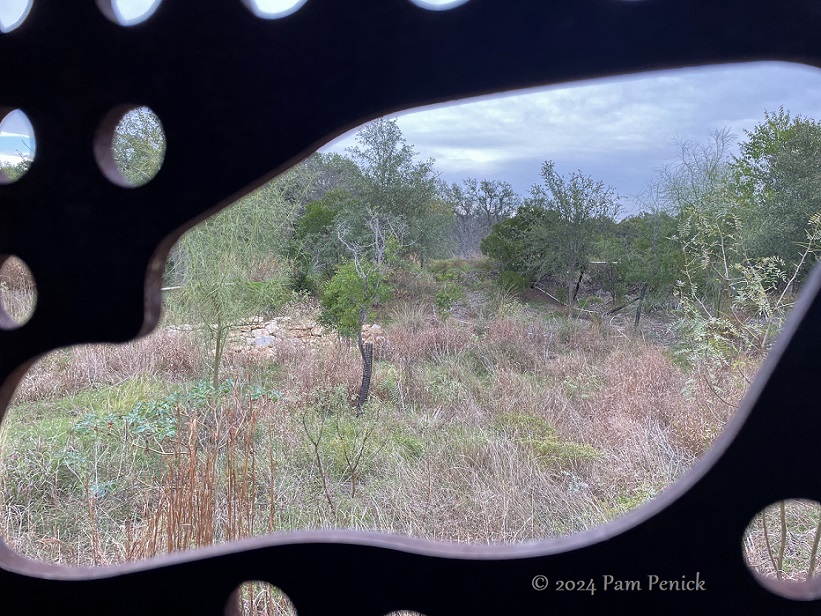
Peek through a cut-out window onto a small pond amid the plants, a perfect draw for the park’s wildlife.
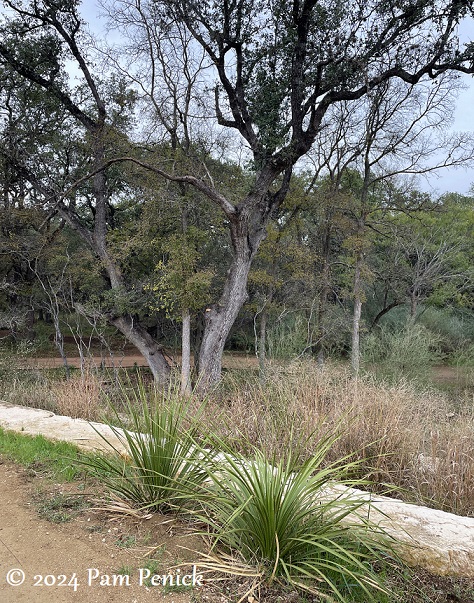
Following the trail back to the parking lot, I enjoyed a landscape of sotols, grasses, and gnarled trees.
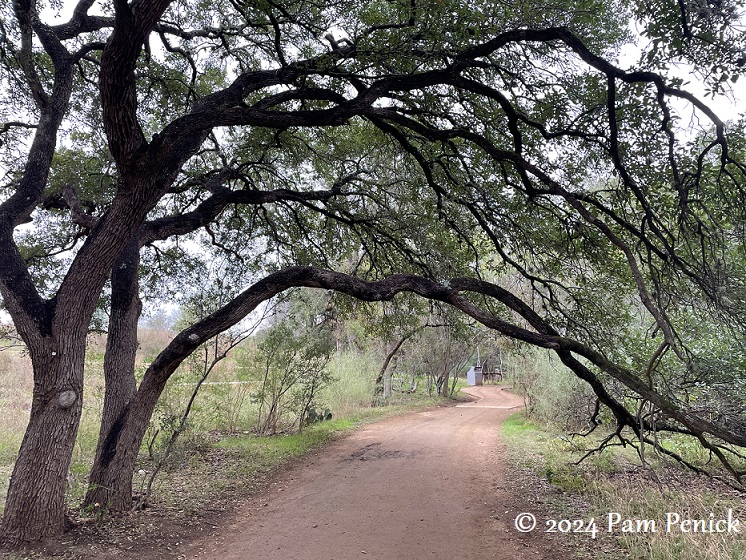
One live oak arching over the path makes a natural portal.
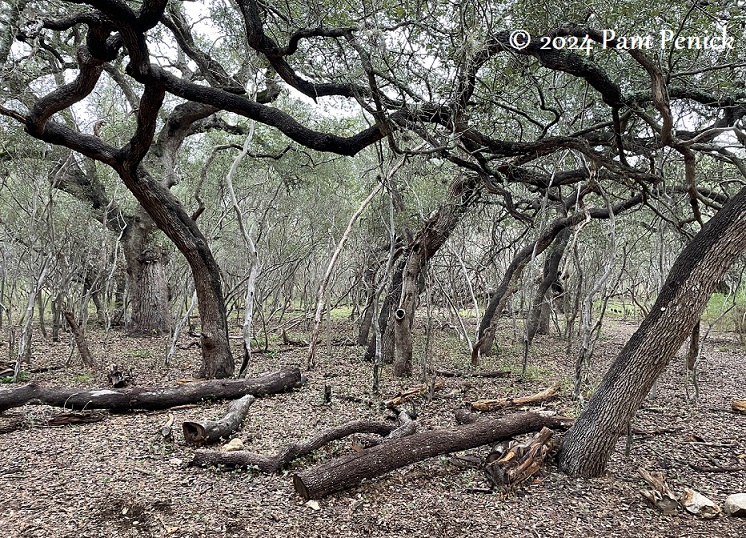
Deadfall left on the ground provides wildlife habitat.
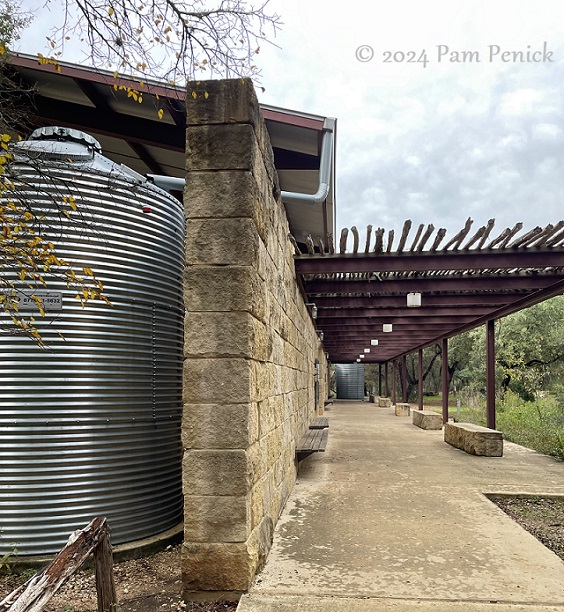
At the Salado Outdoor Classroom and restrooms, large cisterns collect rainwater from the roof. The water is used to irrigate new plants and fill a bird-attracting water feature. Other sustainable features of the park include solar panels for power, bioswales, water-permeable parking lots, permeable paving on trails, and native plants that don’t require irrigation once established. The Tobin Land Bridge itself has a 250,000-gallon water catchment system for irrigating new plants and maintaining water features for wildlife.
Well done, San Antonio! Your land bridge is a model for other cities and wildlife conservation areas.
Want to see another Texas land bridge? To read my post about the Kinder Land Bridge in Houston, click here.
I welcome your comments. Please scroll to the end of this post to leave one. If you’re reading in an email, click here to visit Digging and find the comment box at the end of each post. And hey, did someone forward this email to you, and you want to subscribe? Click here to get Digging delivered directly to your inbox!
__________________________
Digging Deeper
Come learn about gardening and design at Garden Spark! I organize in-person talks by inspiring designers, landscape architects, authors, and gardeners a few times a year in Austin. These are limited-attendance events that sell out quickly, so join the Garden Spark email list to be notified in advance; simply click this link and ask to be added. Read all about the Season 8 lineup here!
All material © 2024 by Pam Penick for Digging. Unauthorized reproduction prohibited.

